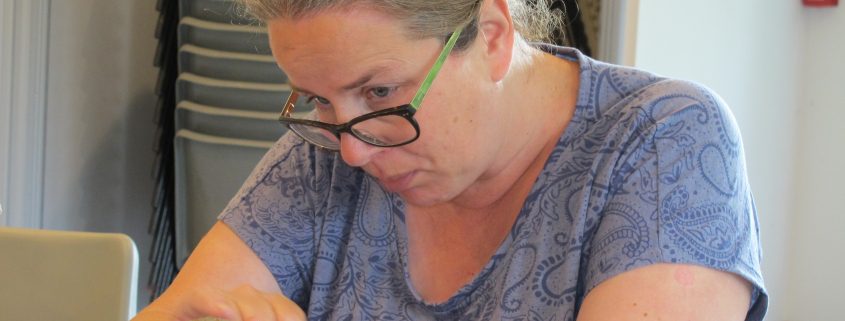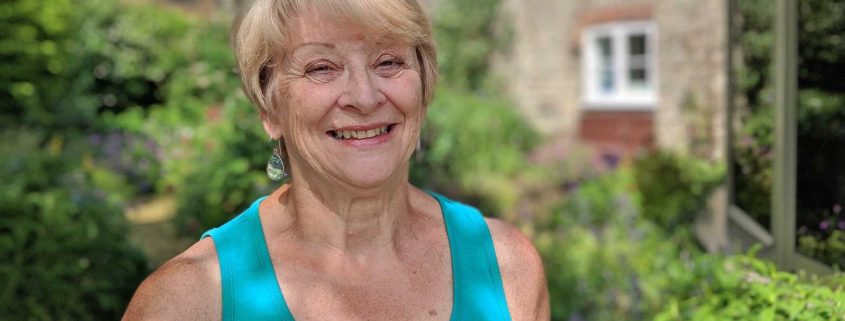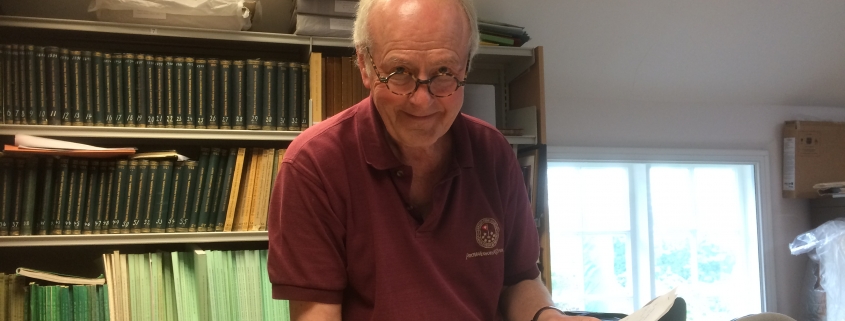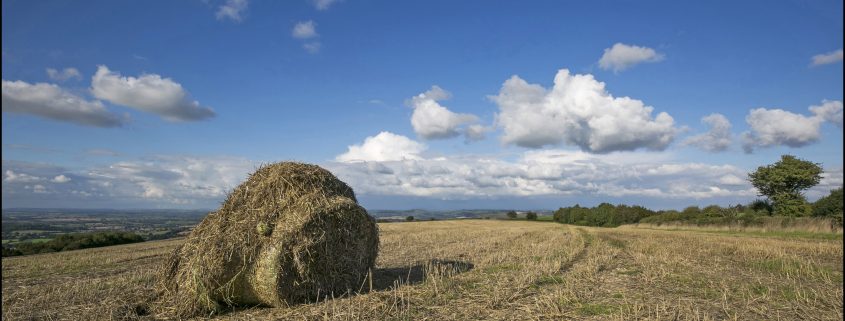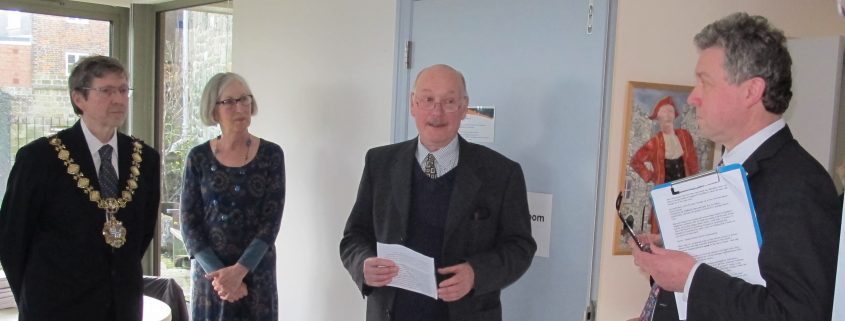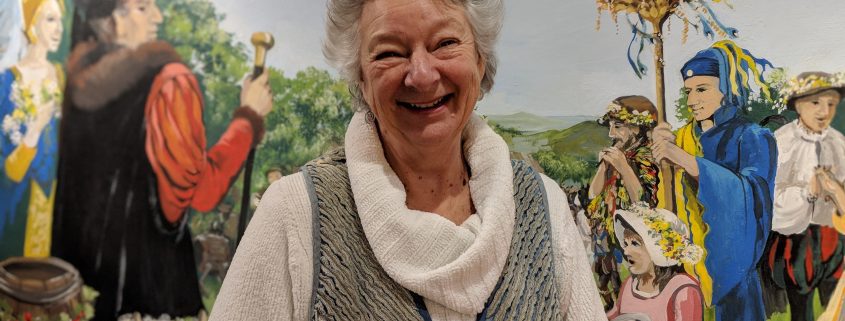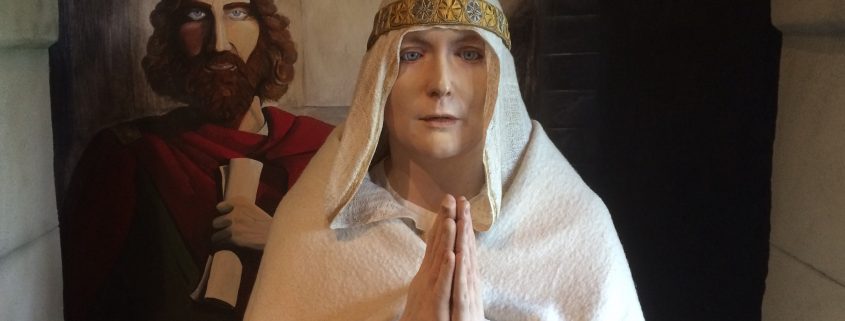Shaftesbury Through Time is published on 15 March by Amberley and available at Gold Hill Museum from 24 March. Click here for a sound podcast.
A new picture-filled book reveals how Shaftesbury has changed since the early days of photography.
Journalist Roger Guttridge (left) and Gold Hill Museum volunteers Claire Ryley and Ray Simpson have produced Shaftesbury Through Time.
The book includes over 200 photographs with some dating back to the 1890s. An archive image and a snapshot of the current view illustrate the story of each location.
Claire thinks readers could have fun by covering up the newer images and trying to guess where the archive pictures were taken. “You can go around the town with the book open,” says Claire. “It makes you much more aware of how places have a history,” she adds.
Roger has worked as a journalist in Dorset since 1970. Although Roger is an experienced writer, he says the help of the Gold Hill Museum team was critical. “I couldn’t have done it without access to the museum’s old photographs. The book would not have happened without help from Claire and Ray,” Roger says.
The timing of Roger’s approach to the museum was perfect because the volunteers have recently collated photographs of Shaftesbury for their Great War project.
The museum has also recently digitized its collection of over 400 photos.
“We were very lucky that there was a photographer in the town in the first two decades of the 20th century and he took many photos of Shaftesbury and the surrounding area,” Ray says.
But capturing new photographs for the book proved a challenge in some parts of town. “Many streets have vans or cars parked there, sometimes 24 hours a day,” says Roger. “There are parts of Bimport that are never free of cars.”
So how much has changed in Shaftesbury?
“The town centre hasn’t altered as much as people would imagine,” says Roger. “Gold Hill and Park Walk have changed very little and long may that continue,” he adds.
The High Street is still recognisable from the old photos until you go back to the period when the market hall stood in the middle of the street.
“We have included drawings from those pre-camera days to illustrate how different that scene was,” Roger says. “We’ve also included a sketch of Shaftesbury Abbey in the 16th century, when it was being ruined.”
Roger recognises that most major differences have occurred on the periphery of town with the new housing developments.
Readers would be unlikely to identify the scene of children walking down a rural country lane as Mampitts Lane, even though the modern view of new homes reveals the location of the archive picture.
Some of the most contrasting old and new images feature the town’s roundabouts.
“The houses at Ivy Cross appear the same but the modern roundabout, petrol station and fast food shops add a rather different perspective,” Roger says.
“Outside the Royal Chase Hotel there was a toll house until about 60 years ago,” Roger continues. “It was in the middle of the roundabout at the place where the Salisbury and Blandford Roads met,” he says.
Claire thinks readers will notice many changes if they study the pictures closely. “I was keen for Roger to include a picture of the former police station on Bell Street,” Claire says. “The library is on that site now and the only clues to the former occupant are the posts, which are decorated with crowns.”
Not all change is bad. The book’s images portray some changes that could be considered improvements. Greenery and trees have flourished in the last 100 years. “You could see much more in the old Victorian and Edwardian pictures looking towards St James from Park Walk,” says Roger, when reviewing the lack of foliage back then.
Claire also feels that the modern town centre is neater.
“The Town Hall had public lavatories, which were like scruffy conservatories on either side of the entrance,” she says, adding that the older pictures revealed a cluttered streetscape. “There used to be signage all over the place and zebra crossings,” Claire says.
As an experienced press reporter, Roger found the pictures relating to the St James’s fire of 1955 fascinating.
“Seven terraced cottages went up in flames,” he says. “We have three old pictures of that and a modern image of the same location. The exact spot was hard to pinpoint because the cottages appeared very similar.”
But Roger had a stroke of luck. “I stopped a woman in the street and showed her the fire pictures. She recognised her grandparents’ house and she told me that the blaze started when a decorator’s blowtorch set fire to a thatched roof.”
Back then thatch was often covered by galvanised iron. “That meant they couldn’t rake off the burning roof and it spread quickly in the strong winds,” he says.
The new book’s pictures also reveal long-forgotten social and entertainment venues.
“There were proper cinemas in Shaftesbury,” says Ray. “There was one near the Bargains shop and the Savoy Cinema was in Bimport, where Savoy Court is today. There was a third cinema in the market, which you could walk through from the High Street to Bell Street.”
Claire lives in Salisbury Street and the book’s images reveal that it was once an extension of the High Street, with many more stores. She has enjoyed collecting stories about the former businesses there.
“Next door to the recent shoe shop called Stomp was a wonderful old store owned by a Mr Peach. When snow caused a water shortage everybody went there because his supply was deep underground and didn’t freeze. I’ve spoken to the current owner and the supply is still there,” says Claire.
Roger is hoping that residents who buy the book will learn more interesting facts about their immediate neighbourhood. “Few people know that part of the workhouse on Umbers Hill has survived. Today it is a single storey property, tucked away in the middle of a modern bungalow estate,” he says.
Roger has read many of the previous Shaftesbury history books in researching the new publication and he believes that the pictorial format of Shaftesbury Through Time will ensure a broad readership, although there is still a lot of information for readers to digest.
“Surprisingly, it contains around 11,000 words, which are used in captions, heading and descriptions,” he adds.
Shaftesbury Through Time by Roger Guttridge will be available from 15 March and Roger can rely on at least one sale.
“I’m very pleased with it. I’ll buy one,” laughs Ray.

